I need some help, I'm trying to pass windows credentials to a WCF service. In the IIS only Windows authentication is enabled for those service and runs over https.
The server side config is:
<system.serviceModel>
<protocolMapping>
<add scheme="https" binding="basicHttpBinding" bindingConfiguration="httpsBinding"/>
</protocolMapping>
<bindings>
<basicHttpBinding>
<binding name="httpsBinding">
<security mode="Transport">
<transport clientCredentialType="Windows"/>
</security>
</binding>
</basicHttpBinding>
</bindings>
<behaviors>
<serviceBehaviors>
<behavior>
<serviceMetadata httpGetEnabled="true" httpsGetEnabled="true" />
</behavior>
</serviceBehaviors>
</behaviors>
<serviceHostingEnvironment aspNetCompatibilityEnabled="true" multipleSiteBindingsEnabled="true"/>
and in the client side:
<system.serviceModel>
<bindings>
<basicHttpBinding>
<binding name="BasicHttpBinding_IMyService" maxBufferPoolSize="2147483647"
maxReceivedMessageSize="2147483647">
<security mode="Transport">
<transport clientCredentialType="Windows" />
</security>
</binding>
</basicHttpBinding>
</bindings>
<client>
<endpoint address="https://myserver.net:4343/MyService.svc"
binding="basicHttpBinding" bindingConfiguration="BasicHttpBinding_IMyService"
contract="MyServiceReference.IMyService" name="BasicHttpBinding_IMyService" />
</client>
I'm trying to consume the service on this way:
Client = new MyServiceClient();
BasicHttpBinding binding = new BasicHttpBinding(BasicHttpSecurityMode.Transport);
binding.Security.Transport.ClientCredentialType = HttpClientCredentialType.Windows;
binding.MaxReceivedMessageSize = int.MaxValue;
binding.MaxBufferPoolSize = long.MaxValue;
binding.MaxBufferSize = int.MaxValue;
EndpointAddress ep = new EndpointAddress("https://myserver.net:4343/MyService.svc");
Client = new COMINTSServiceClient(binding, ep);
Client.ClientCredentials.Windows.AllowedImpersonationLevel = System.Security.Principal.TokenImpersonationLevel.Identification;
Client.ClientCredentials.Windows.ClientCredential = System.Net.CredentialCache.DefaultNetworkCredentials;
Client.Open();
Array[] obj = Client.RandomMethod();
This code doesn't work for me:
Client.ClientCredentials.Windows.AllowedImpersonationLevel = System.Security.Principal.TokenImpersonationLevel.Identification;
Client.ClientCredentials.Windows.ClientCredential = System.Net.CredentialCache.DefaultNetworkCredentials;
In the service when ask for the user who is calling to the service using ServiceSecurityContext.Current.WindowsIdentity.Name allways get: ISS APPPOOL\ASP.NET v4.0 instead of the domain\user who is calling
The only way to make it work is write the username and password instead DefaultNetworkCredentials.
Client.ClientCredentials.Windows.ClientCredential.UserName = "DOMAIN\\user";
Client.ClientCredentials.Windows.ClientCredential.Password = "passw";
But I don't want a user/passw hardcoded. Any help please?
